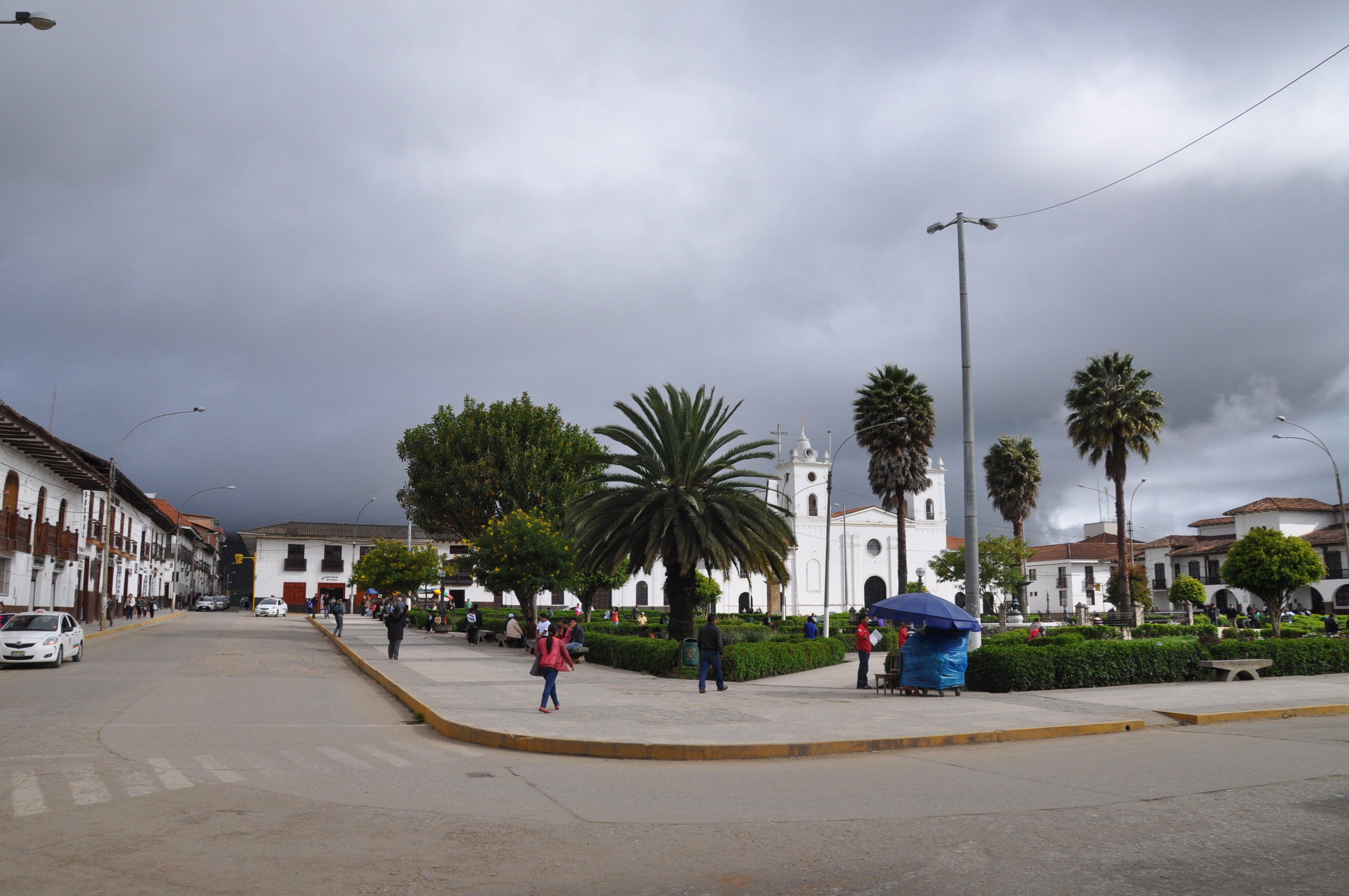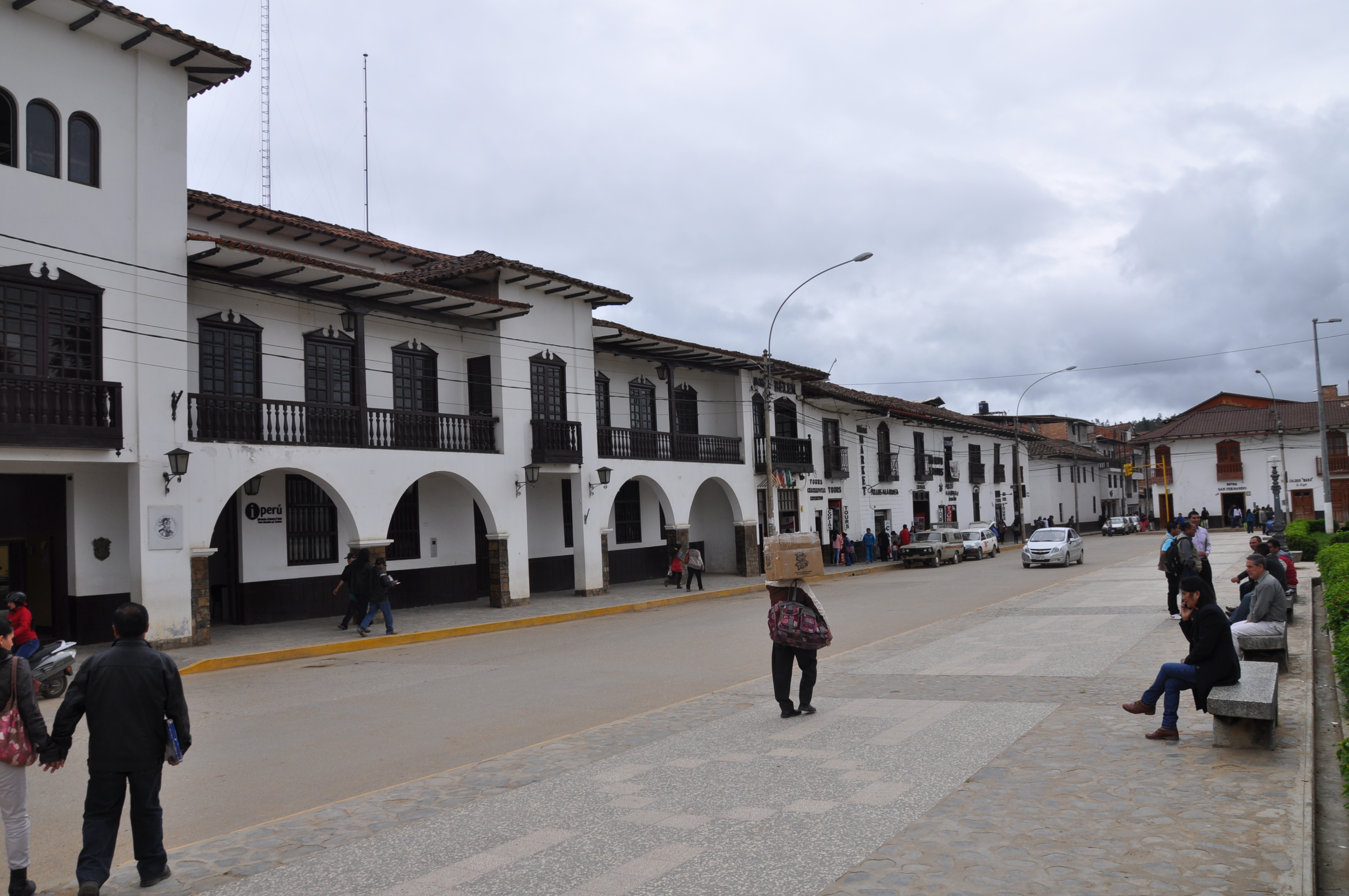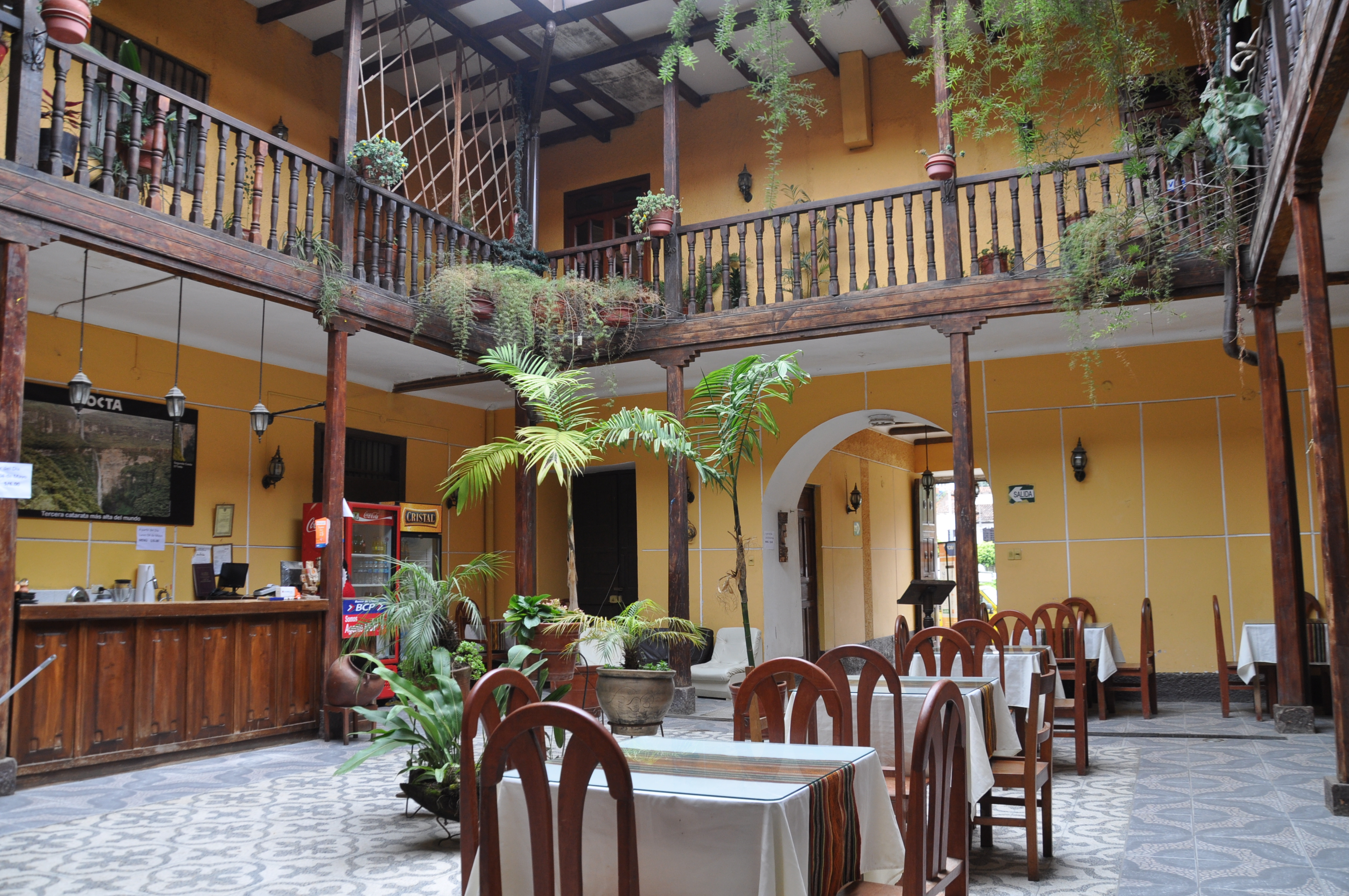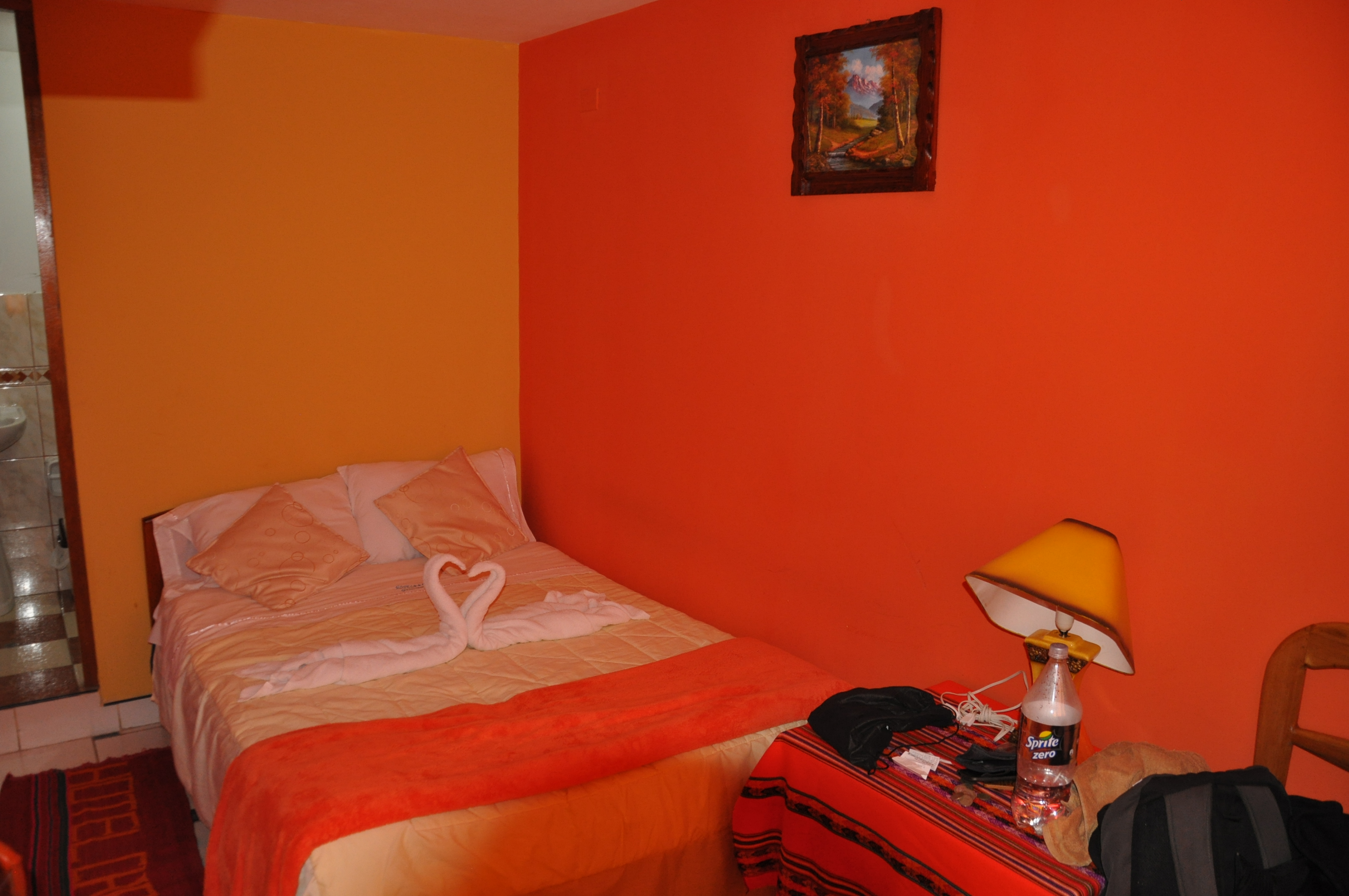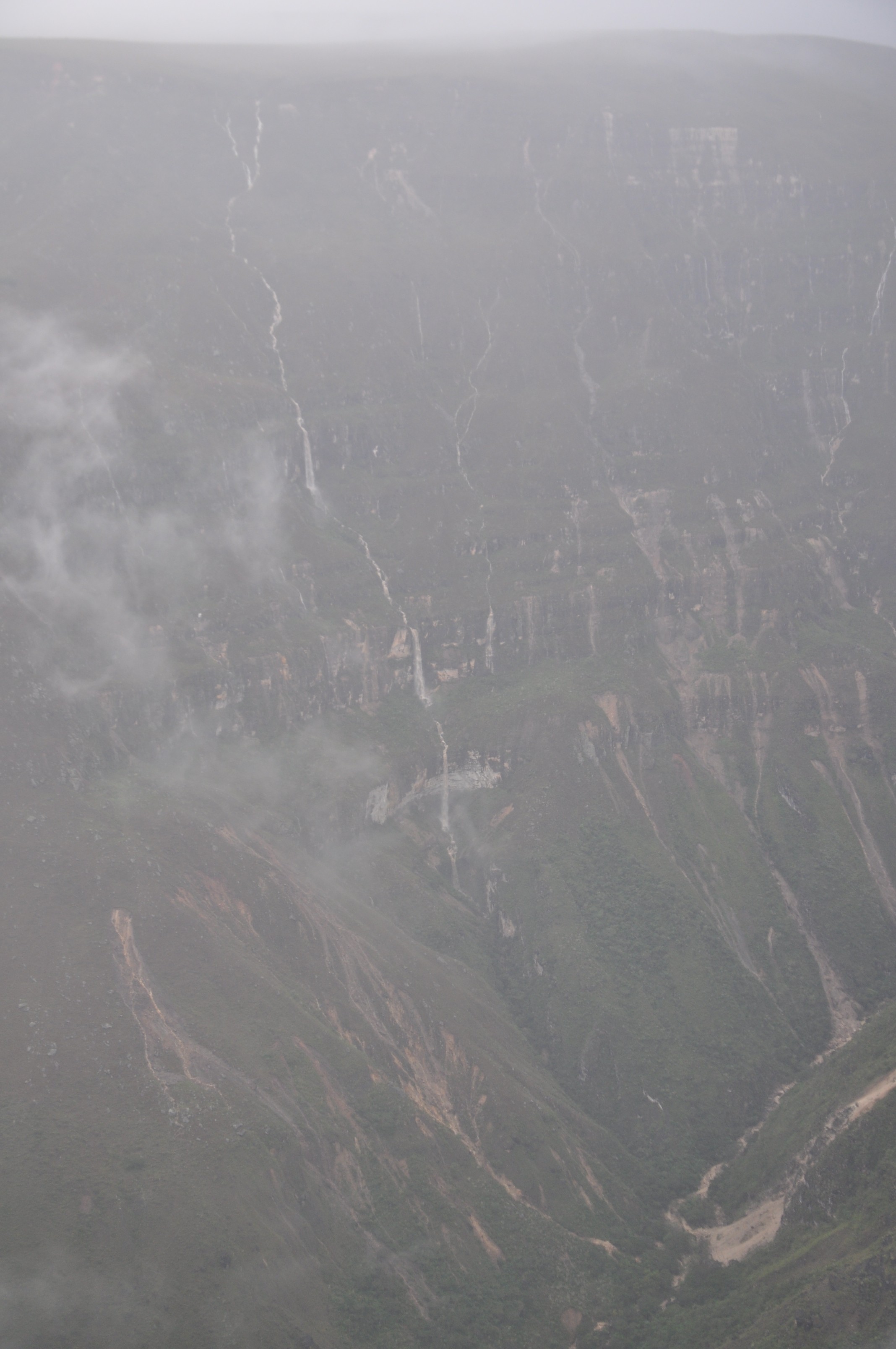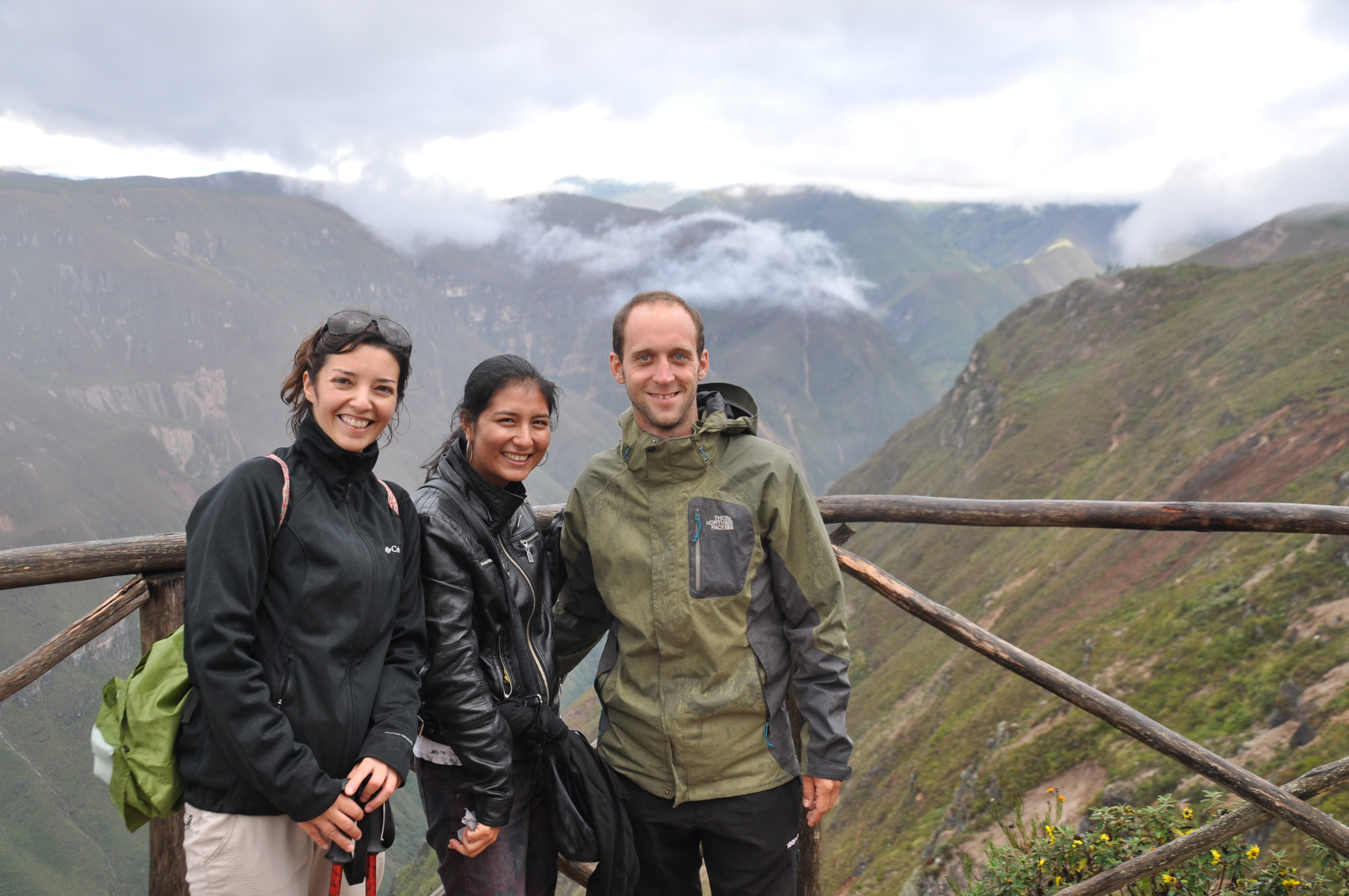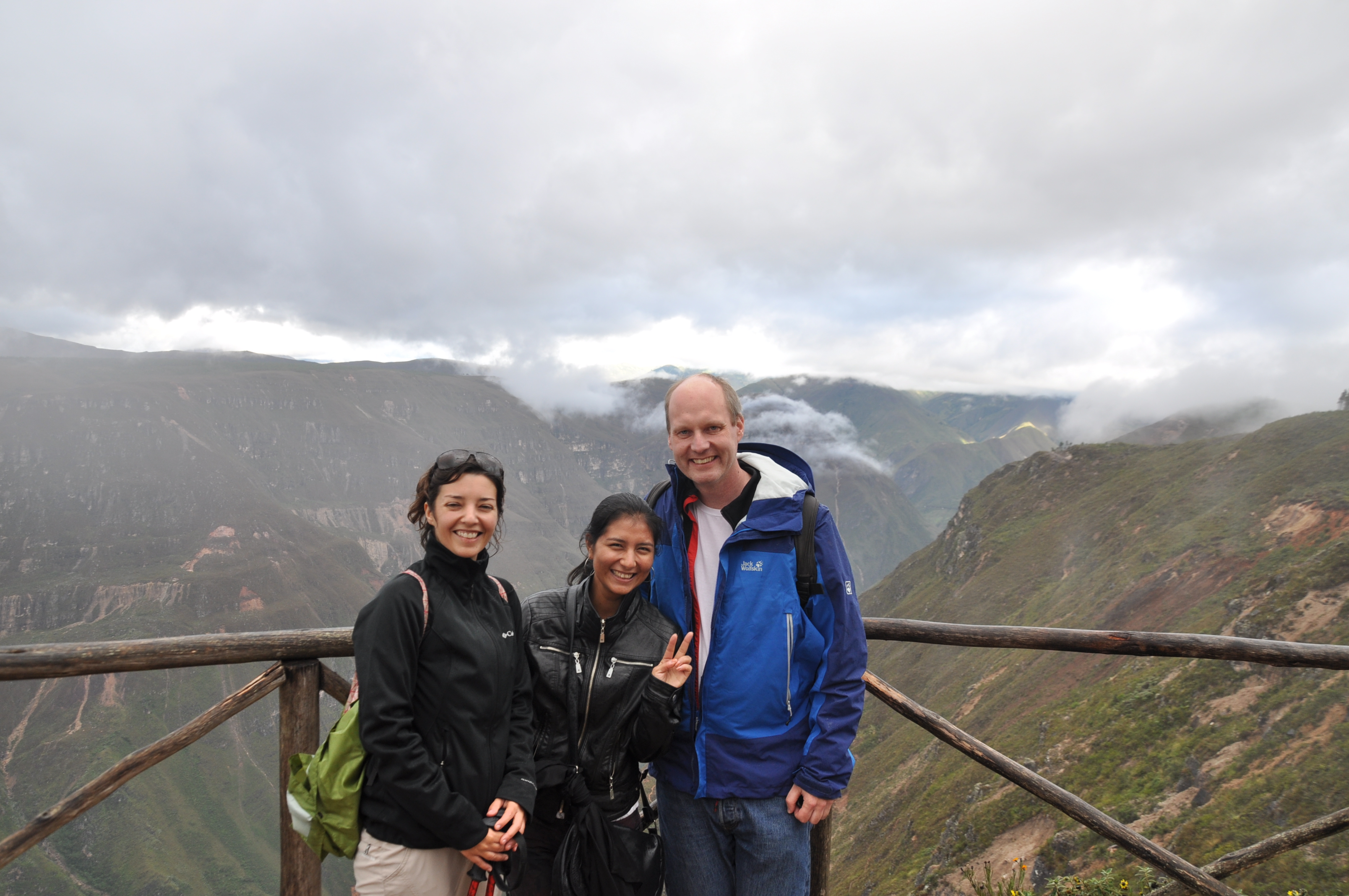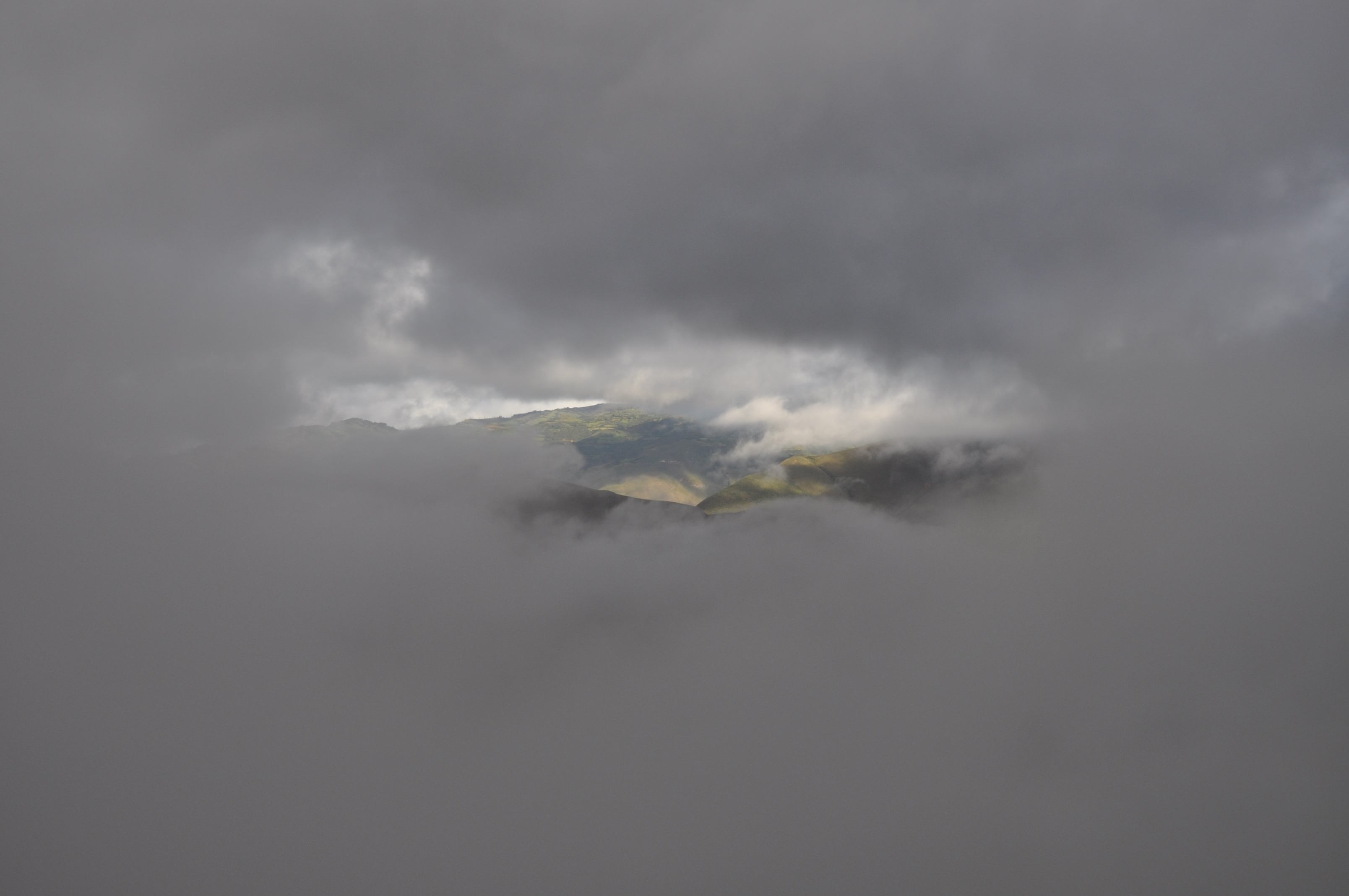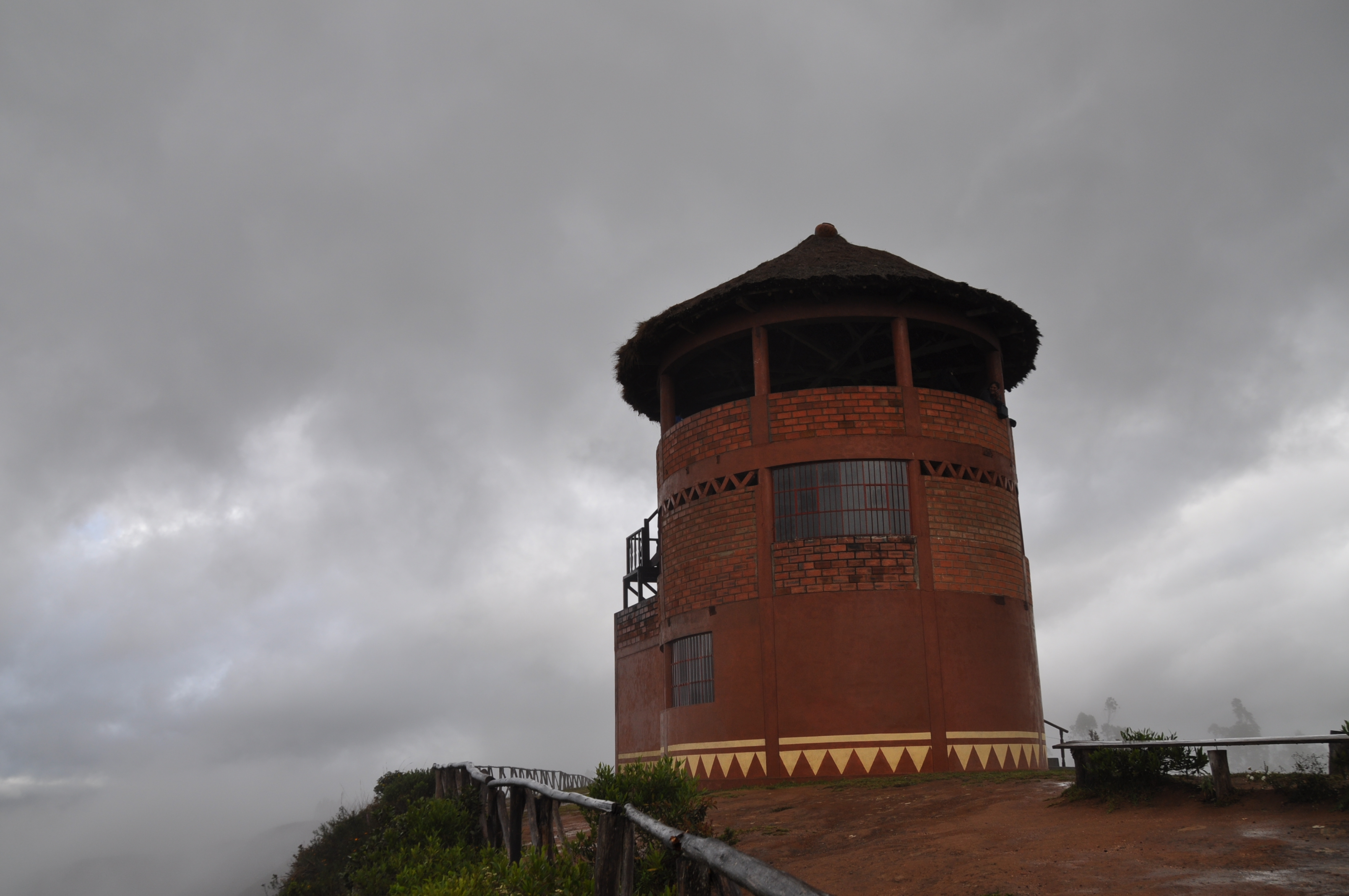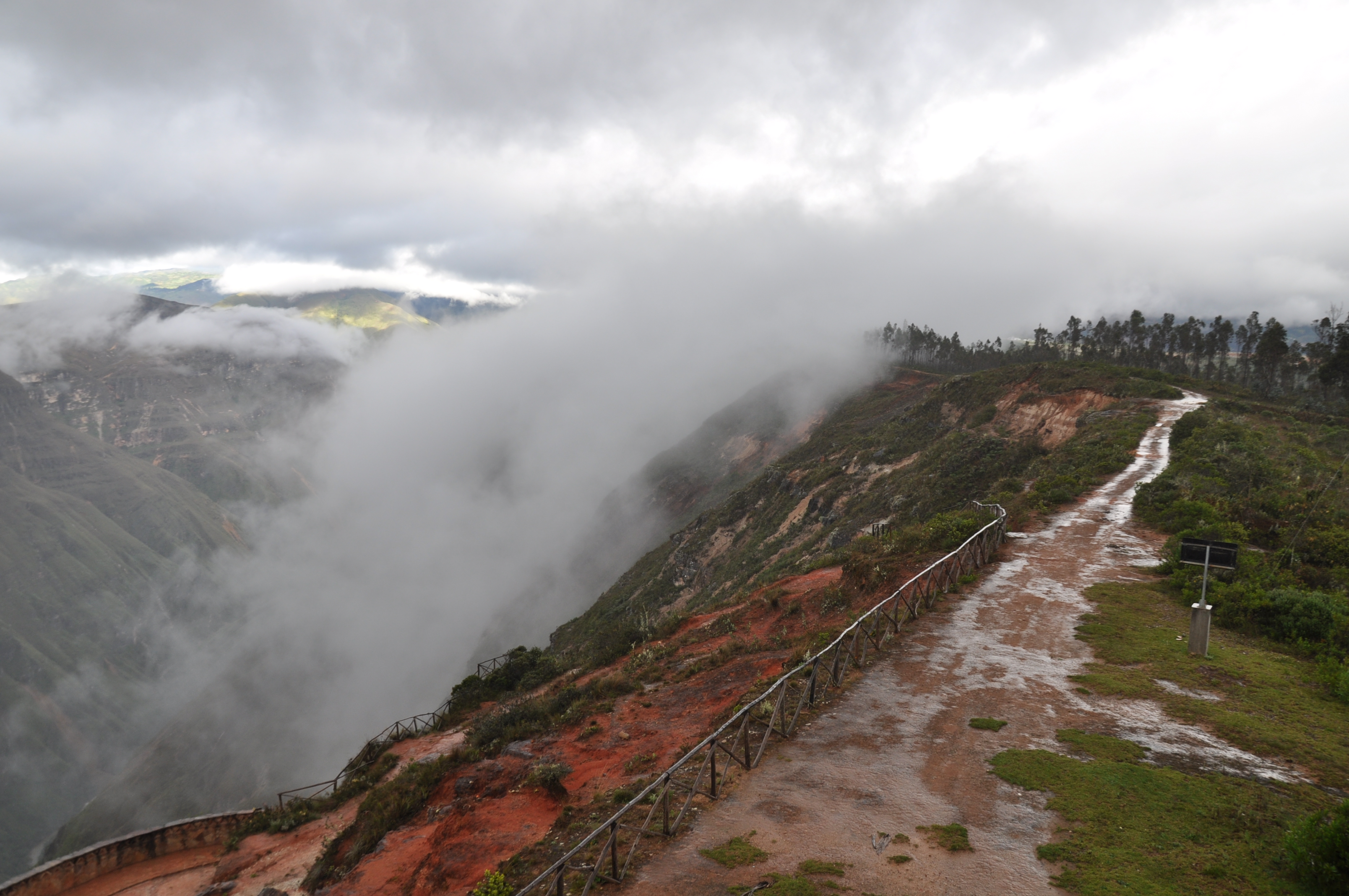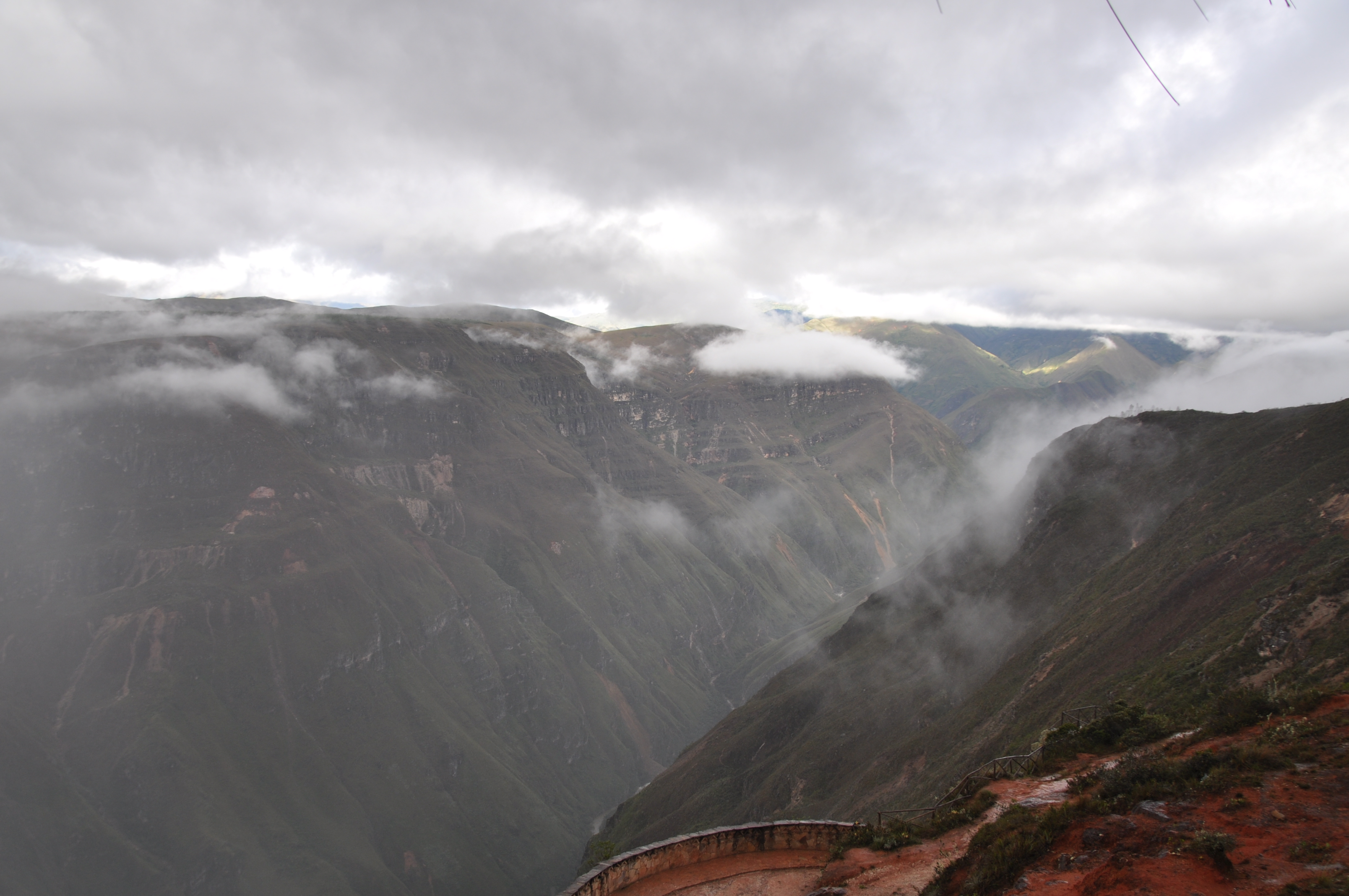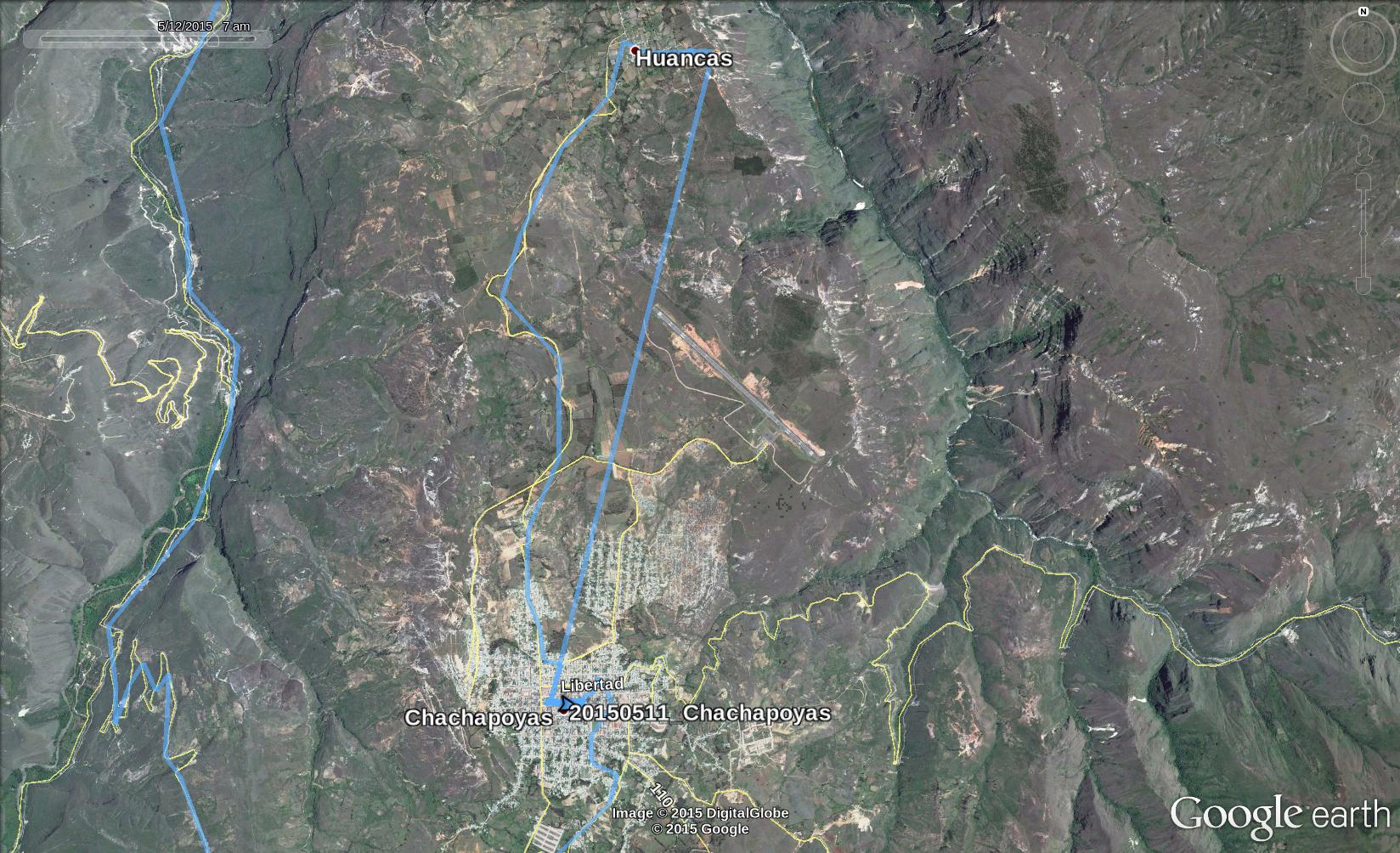Chachapoyas
I arrived in Chachapoyas around 9:00 AM. The tours to the vicinity of Chachapoyas had already gone. After checking in at the hotel, I walked a little bit around Chachapoyas.
Chachapoyas was founded September 5th 1538 by Alonso de Alvarado, a general of Francisco Pizzaros, as a bridge head for the Spanish expeditions to the Amazonas. The typical checker maze layout of a colonial town is still visible. Houses with wooden balconies and traditional tiles are neatly arranged around the main plaza, Plaza de Armas, and there is the customary fountain in the middle.
I then continued to a small museum, the Instituto Nacional de Cultura Museo. It has some tools, artefacts, clothing, ceramics, and 6 tied up and dried out human bodies in kneeling position of indigenous Chachapoya on display (5 women, 1 men). All of them were between 25 years to 35 years of age when they passed away. Though not exceptional for the region as I found out later on, their display maybe not for the faint of heart …
Huancas
I continued by cab and went to Huancas, a town nearby that overlooks Chachapoyas and a high, steep valley. It was pretty cloudy and it rained. Chachapoyas was not visible.
The little village of Huancas is known for its pottery, and is inhabited by the Wanka people. They originated from Junin, a region in the central Andes. According to a guide, the Inca annexed the Wanka territory. The Wankas in return organized some uprising which the Incas suppressed by displacing them all over their empire — one group ending up in Huancas.
